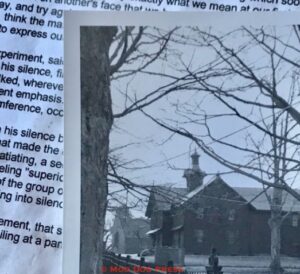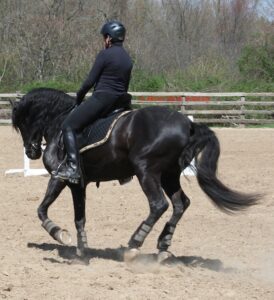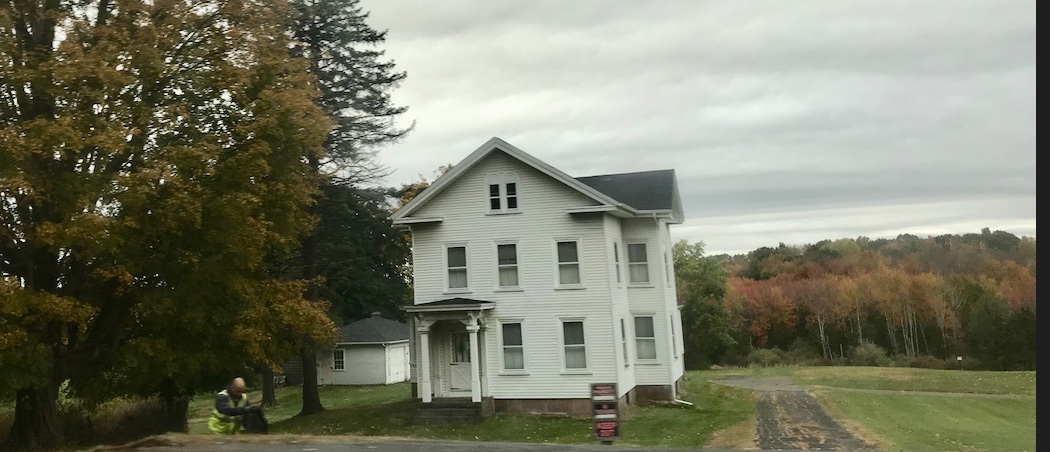COVID-19 Era: Travel To ‘Caspar Hall Place’ With Burton Hubbell, Photographer
Editor's note: This story has been revised and moved. Linked here.
The Hall farm on Preston Avenue is now missing its barn, but always dream of Yale University acquiring the property to study soil, landscape growing back to woods, creating gardens. Students on the land, which is near trails that lead up to the sky islands that are the rugged traprock hills. Higby. Lamentation. An outdoor laboratory.
“Barns are working buildings; they are the largest tool on a farm. Like any tool, their shape and size reflects they way in which they are used. . . a barn's shape, size and attributes reflect the job it was intended to do.
“Barns are disappearing from the Connecticut landscape. In some cases, it takes years for a barn to slowly decay. In others, a barn may be standing one day and gone the next, razed to make way for new construction. With each barn that is lost another piece of the state's rich agricultural history disappears,” according to details listed the Connecticut Barn survey, a project of the Connecticut Trust for Historic Preservation (CTHP).
The CTHP barn project site is a rich and image-heavy resource for anyone who loves country, architecture and visual beauty. For information or other historic barns initiative programs, contact Todd Levine at barns@cttrust.org. For other information call (203) 562-6312. The National Trust for Historic Preservation's Barn Again! program was created and is managed in partnership with Successful Farming magazine for help with technical issues and workshops.
“In a few places, concerned groups have begun to inventory existing barns with the hope of at least documenting the buildings before they are gone. But in many parts of the state the sense of loss is based on anecdotal evidence. We simply don't know where the state's barns are, what they look like, and how they were used. We don't know what we are losing.”
Rich soil. Pastures returning to woodlands. Indigenous histories hidden in the soil and words that describe places. Work outdoors teaches so much that is retained without conscious thought. The shape of leaves, how trees grow, life associated with certain plants, around stone walls. Microclimates. Walks to see farther, observe hawks riding thermals. The scent of autumn. Go away, then come back. Florida soils are new, Connecticut's earth and rocks enriched. Compare. Travel. Learn. Maples sweeten as they return by composting and in time. Just look at the interconnected life forms in handfuls. Oaks and acorns, ticks and bacteria. Learn more. Eradicate that barberry. Listen to what is being said without words, be around horses, animals, plants. Tune out the noise, find the signal. Pursue it.



